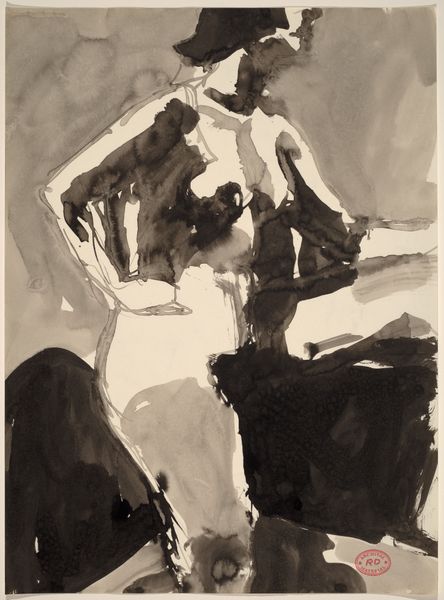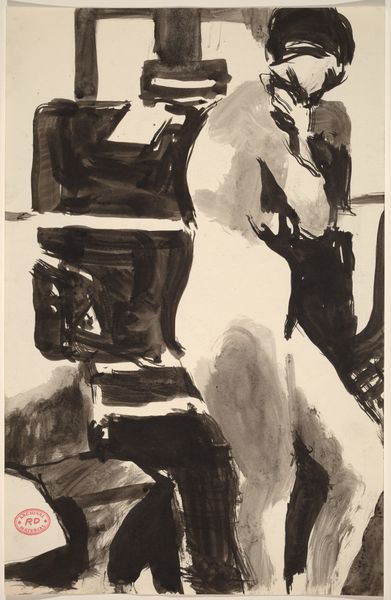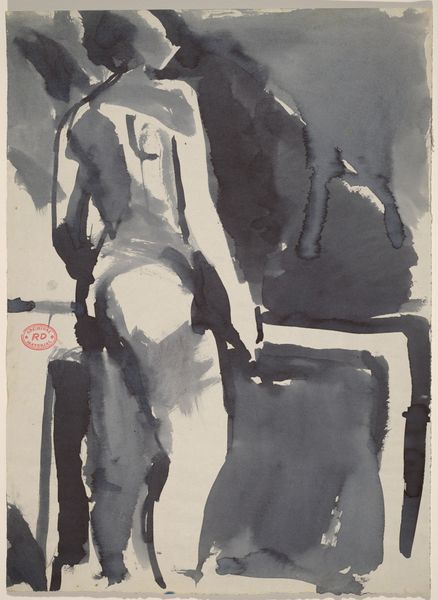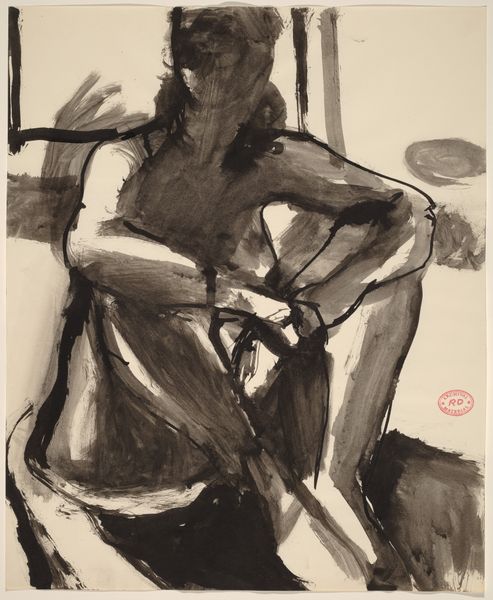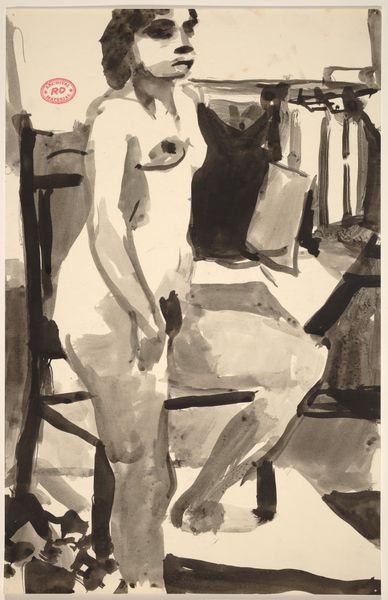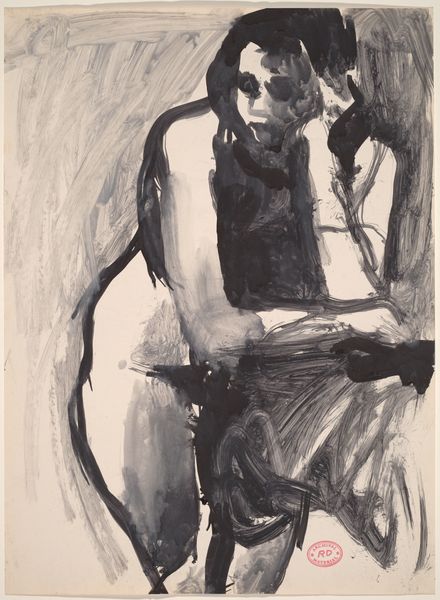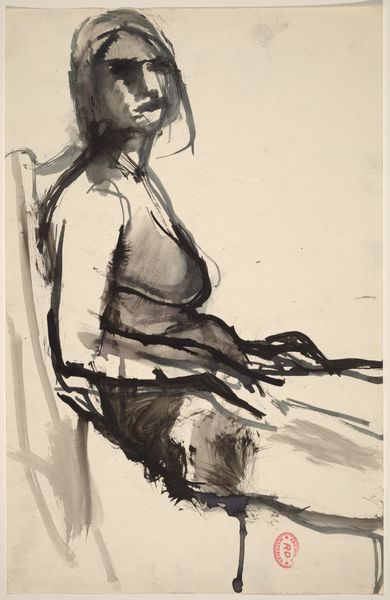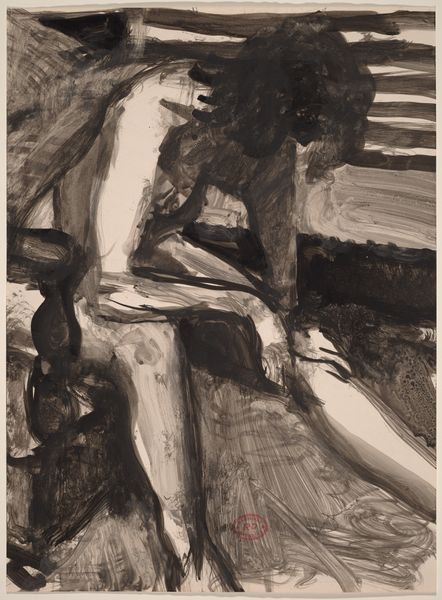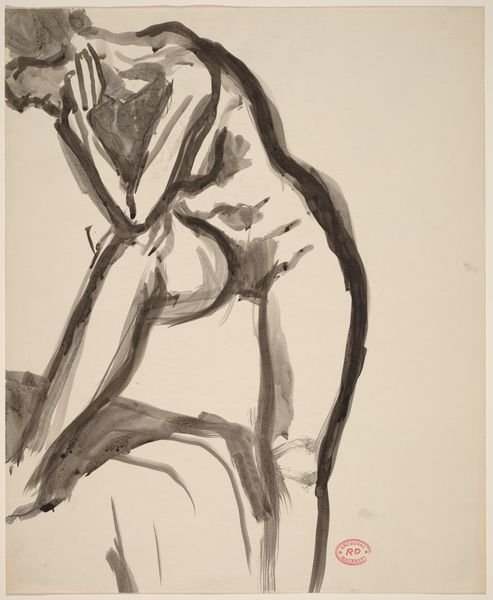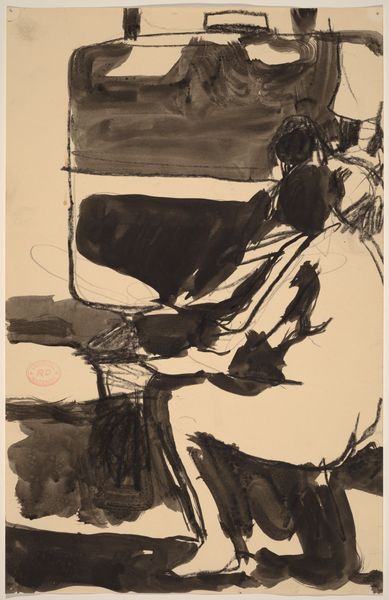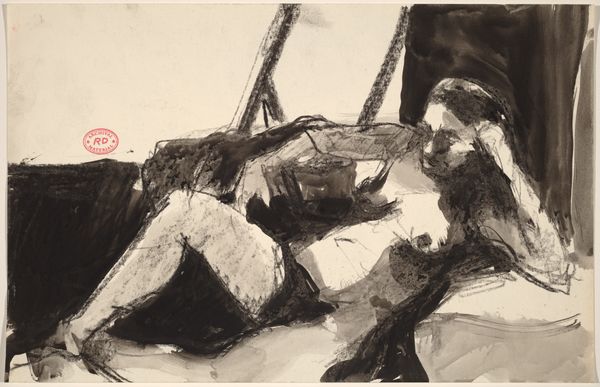![Untitled [female nude seated backwards in a chair] by Richard Diebenkorn](/_next/image?url=https%3A%2F%2Fd2w8kbdekdi1gv.cloudfront.net%2FeyJidWNrZXQiOiAiYXJ0ZXJhLWltYWdlcy1idWNrZXQiLCAia2V5IjogImFydHdvcmtzL2E0NzYxNWI5LTM4MmItNDkxMS1hZDdkLTY1OTJhMjhkNGQzNC9hNDc2MTViOS0zODJiLTQ5MTEtYWQ3ZC02NTkyYTI4ZDRkMzRfZnVsbC5qcGciLCAiZWRpdHMiOiB7InJlc2l6ZSI6IHsid2lkdGgiOiAxOTIwLCAiaGVpZ2h0IjogMTkyMCwgImZpdCI6ICJpbnNpZGUifX19&w=3840&q=75)
Untitled [female nude seated backwards in a chair] 1955 - 1967
0:00
0:00
drawing, ink
#
drawing
#
figuration
#
bay-area-figurative-movement
#
ink
#
surrealism
#
abstraction
Dimensions: overall: 35.2 x 27.3 cm (13 7/8 x 10 3/4 in.)
Copyright: National Gallery of Art: CC0 1.0
Curator: Before us, we have an untitled ink drawing by Richard Diebenkorn, created sometime between 1955 and 1967. It presents a female nude seated backwards in a chair. Editor: It’s unsettling, wouldn’t you agree? The stark contrasts, the fragmented forms... almost oppressive. Curator: Oppressive is a strong word. The energy is quite dynamic, though. Notice how the negative space is just as crucial as the areas defined by ink. It builds a palpable tension. The gestural quality of the brushstrokes gives it a real sense of immediacy. Editor: Immediately disconcerting. There's a power dynamic here, I think. A faceless woman, almost erased, posed for the male gaze, but defiant in her refusal to be fully seen. We must recognize the art historical tradition Diebenkorn is responding to, as well as actively pushing against. Curator: Interesting observation. I see the facelessness more as a reduction to pure form. Stripped of identifying features, we’re left with line and shadow, the fundamental elements of drawing. It's not necessarily about erasure, but distillation. Consider how the lines build shape and depth. It isn't solely about the figure as a social construct, but how a figure is constructed, aesthetically, by its material. Editor: And yet, Diebenkorn painted women throughout his career. To remove context of what he is known for seems naive, at best. In light of the political context, how can we divorce this imagery of objectification and alienation from broader gendered experience of the period? It invites critical conversation about not just his practice, but the nature of representation itself. Curator: Well, in purely formal terms, the drawing embodies a fascinating push-and-pull between abstraction and figuration that defined Diebenkorn’s style. Editor: Agreed. Ultimately, this small work allows us to consider broader dialogues in both art historical and present day contexts, allowing us to think critically. Curator: Indeed. It also compels us to look closely at the art itself, to interpret and appreciate its compositional rigor.
Comments
No comments
Be the first to comment and join the conversation on the ultimate creative platform.
